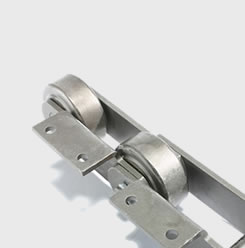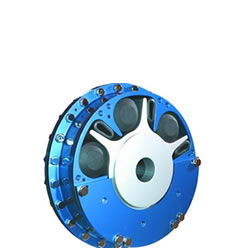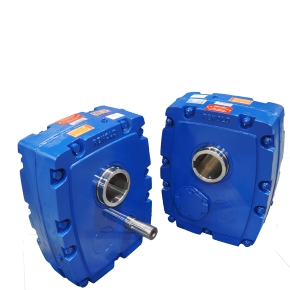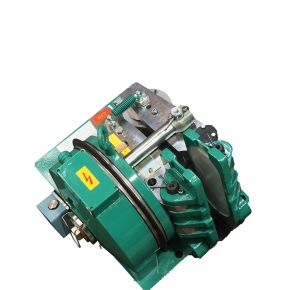Standard Attachments/Pins
Standard attachments are added to a base chain to fit various flights, slats, buckets or moulds. Attachments may form an integral part of the link plate or may be built into the chain as a replacement of the normal link.
Various attachments are available:
Standard attachments are described below:
F Attachments
Outer or Inner Links
F Attachments provide a flat surface at right angles to the chain plate. They are used for securing pushers, scraper bars, etc.
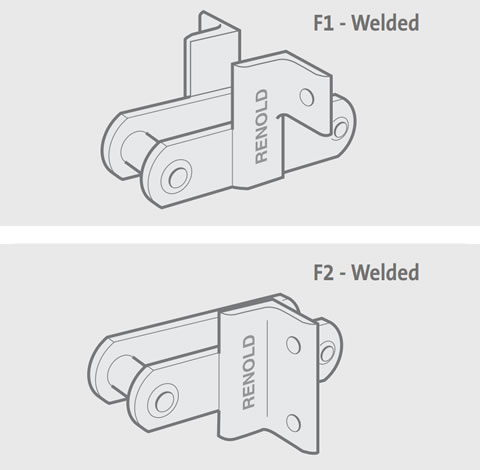
K Attachments
K Attachments on outer or inner links are used for securing slats, scrapers, buckets etc. to the chain.
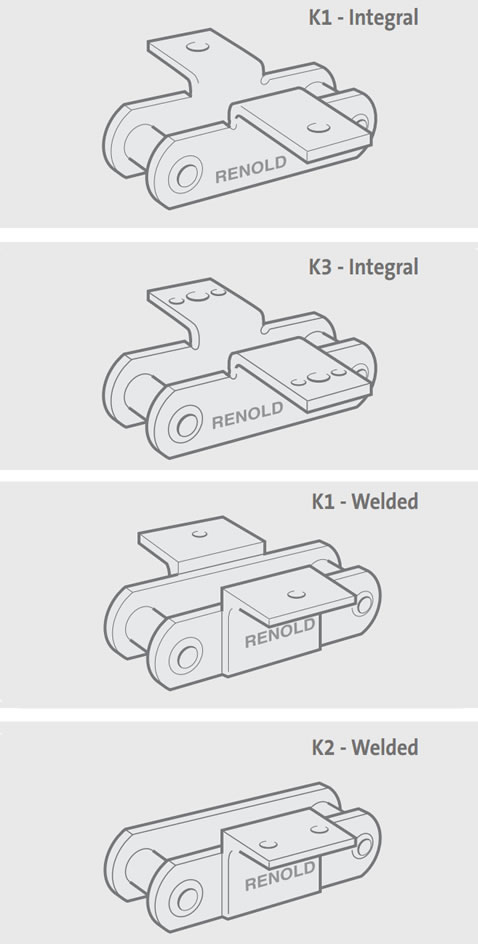
L Attachments
L Attachments normally have one or two holes (L2 preferred), but for use on scraper applications they can be supplied without holes and to suit various conveyor widths (LO Type).
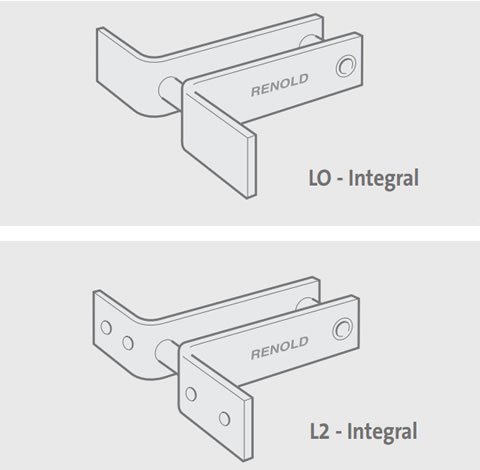
Hollow Bearing Pins & Holed Link Plates
Hollow bearing pin type chain provides for fixing attachments to outer links by bolting through the hollow bore of the pins. Rods can also be fitted through hollow bearing pins and are commonly used in dual chain strand applications.
Single holed link plates are primarily used with spigot pins with holes required on both sides of the chain. Double holing is provided for the assembly of special attachments on one or both sides of the chain. The holes in the inner plates are countersunk on the inside face to prevent the bolt heads fouling the sprocket teeth.
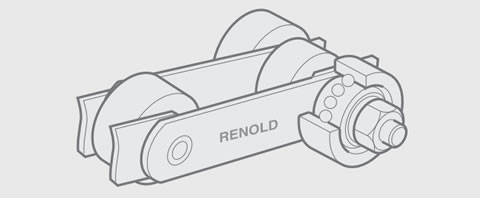
Extended Bearing Pins
Extended bearing pins, one side of chain, can be specified at any pitch point or spacing in the chain and can be supplied plain, drilled or with a threaded end.
They are an integral part of the chain assembly and cannot be removed without dismantling the chain. Extensions can be case hardened or soft to suit customer’s requirements.
Outboard Rollers For use on Hollow Bearing Pin Chain
Outboard rollers have two principal advantages; as direct load carriers they enable the chain rollers to be used solely for gearing purposes and in the event of outboard roller wear, they can be replaced easily without recourse to chain replacement. They are particularly useful when attachments prevent the gearing rollers running on support tracks on the return run or where the roller loading is high.
